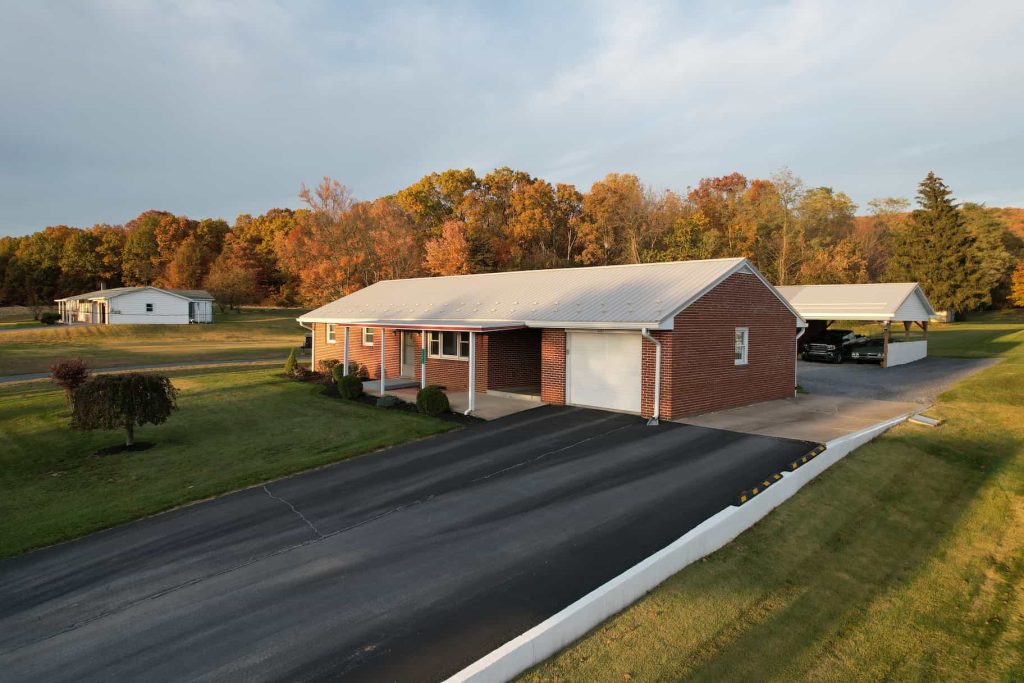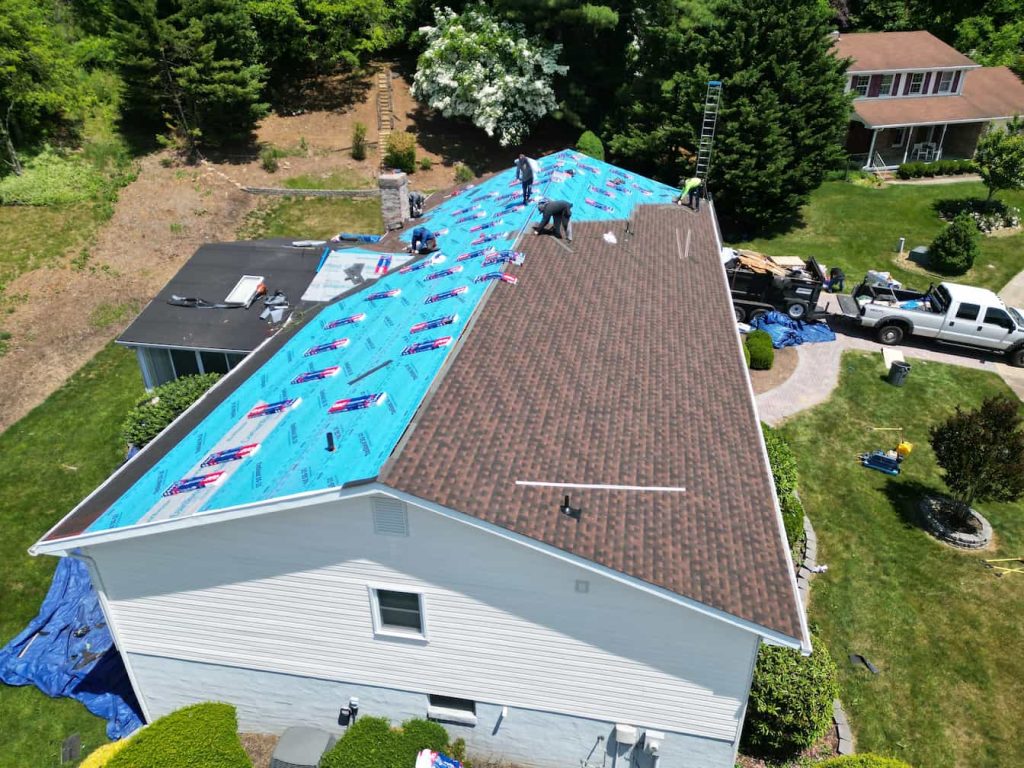Low-Pitch Roofing in Maryland
What Are Low-Pitch Roofs?
Low-pitch roofs can be described as having flat slopes, angles, or gentler inclines.
Low-slope roofs generally have a minimum slope of 1/4 inch vertical to 12 inch horizontal (¼:12 or 2 percent), depending on the roofing material used for them. Roofs are considered low-slope up to a 3:12 pitch.
Contrary to steep-pitch roofs, these roofs are not commonly seen in traditional architectural styles. It’s the modern architectural styles low-pitch roofs blend best with, as they offer a sleek and contemporary look, and come in various designs.
They are incredibly easy to maintain. Local roofers can easily access this type of roof, as it has a sturdy foothold for any repair work needed. There’s minimal worry for safety, and jobs are quickly completed, depending on their complexity.
What Are the Benefits of Low-Pitched Roofs?
Having a roof with a low slope has many benefits:
FLEXIBILITY
Roofs with low slopes are aesthetically flexible. They can be applied to many contemporary building types.
BETTER USABILITY and ACCESSIBILITY
All the open, extra space on your roof can be used for your own DIY garden, or you can install solar panels for better energy efficiency. Don’t be afraid to get creative with your own low pitch roof solutions!
If your roof gets damaged or work needs to be done on it, local roofing companies can easily tend to it without major preparation. Thus, repairs are easier.
REDUCED INSTALLATION and UPKEEP COSTS
A low-slope roof usually means you won’t have extra attic space, if there’s an attic at all.
However, that does mean getting a reduced installation cost, as there is less surface area of the roof to build, which helps keep material costs down.
When looking for a modern and functional roof, low-pitched roofs are an ideal choice.
What About the Disadvantages of a Low Slope Roof?
As with every roofing system you choose, you’ll find faults with this one, too. You must be familiar with these when you finalize your decision.
Compared to steeper slopes, a low-slope roof:
- Has slower drainage of water, snow, and ice.
- Has frequent debris build-up on the roof.
- Is incompatible with some roofing materials.
Design Compatibility
If you’re thinking about installing a low-pitch roof, its shape must complement your building’s overall look, whether they’re in the modern, contemporary, or classic style.
One benefit that results from this is if you stick to a consistent aesthetic, your building’s worth can increase, which in turn can attract more buyers if you ever decide to sell it.
Material Selection
The efficiency and longevity of a low-pitch roof are directly proportional to the quality of its roofing material.
Low-pitch roof installations often use modified bitumen or single-ply membranes, as these materials are highly resistant to wear and tear.
Waterproofing
Low slopes require exceptionally reliable waterproofing.
In order to avoid damage from water seepage and leaks, invest in high-quality waterproofing systems that will withstand years of rain, snow, and moisture.
Drainage System
Alongside waterproofing, flat roofs must have adequate drainage to prevent water buildup and guarantee efficient outflow.
You can prevent water accumulation on a roof by installing a proper drainage system, such as gutters, downspouts, and internal or external drains.
Wind Resistance
If you live in an area where storms are frequent, then you must give special care to low-slope roofs. Choose materials that have great wind resistance.
A strong internal structure and reliable fastening methods are examples of wind-resistant roofing technologies. They help to keep a roof stable in the face of high winds.
Maintenance Requirements
Maintaining a low-slope roof can be pretty straightforward.
You should ultimately focus on the amount of debris left over on your roof after heavy rainfall or other storms. In order to keep water from pooling and prevent drainage systems from getting clogged, all debris must be removed immediately.
Furthermore, reapplying paints or sealants on a regular basis to your roof can increase its protection and lengthen its lifespan.
Snow Load
Be attentive to the load capacity of a low-pitch roof. This especially applies to areas that see plenty of snow.
A roof’s ability to endure the weight of accumulated snow without compromising its structural integrity depends on two factors:
- the roofing materials used during the installation,
- and how the structural support of your building was set up.
Energy Efficiency
If you use reflective roofing materials like a white or light-colored membrane, you may have reduced cooling costs in the summer.
Applying solar panels on your low-slope roof can produce clean energy and reduce your building’s carbon footprint, as well.
Ventilation
You must have proper ventilation to prevent mildew, rot, and condensation. Once you’ve installed vents and/or an exhaust system on your roof, the area under it should remain dry throughout the year.



Transform Your Roof with AC Matthews, Roofing & Exteriors
If having a low-pitch roof is something you’d like to invest in, talk to AC Matthews!
We have established ourselves through the years as a trusted source of roofing options for low pitch roofs. We are GAF-certified, Master Elite Roofing contractors, offering a protection period of up to 50 years for roofs installed by us.
Get firsthand information about any roofing services from AC Matthews today!